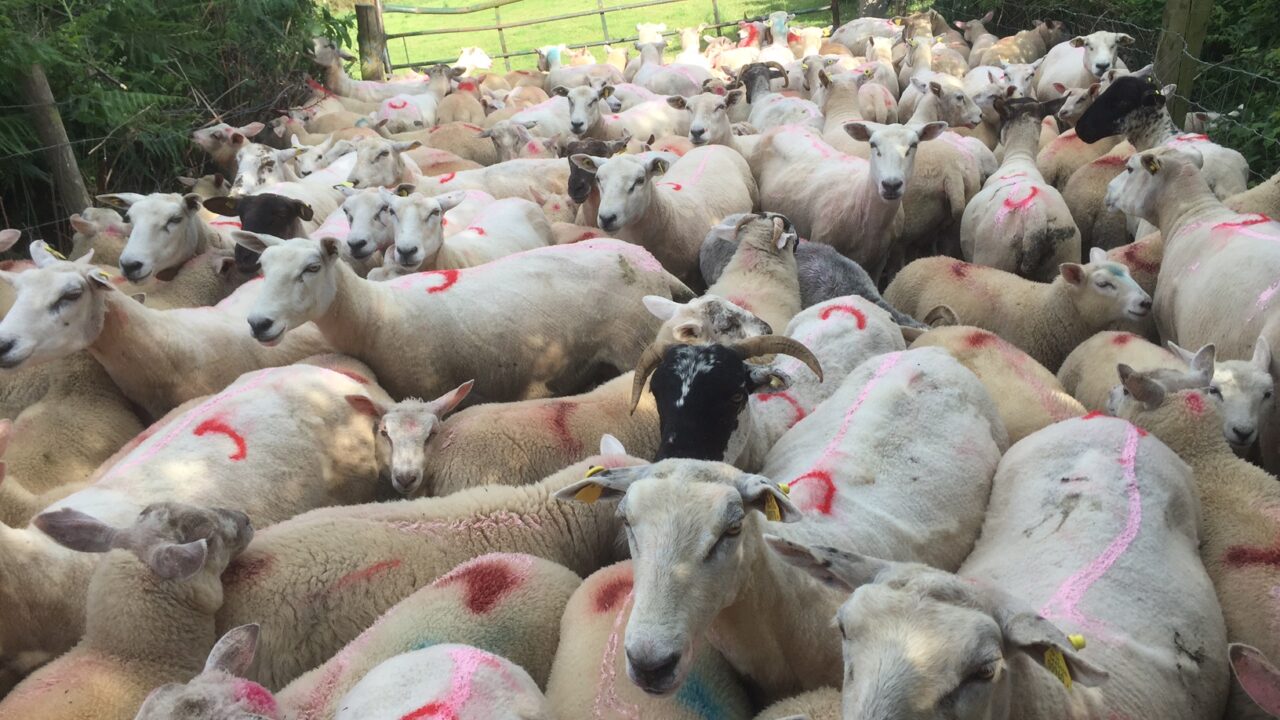The number of agricultural people employed on farms in Northern Ireland increased by 2% over the last year, the latest official figures show.
This year around 48,700 people were employed on farms – up by around 1,000 on 2016.
Dairy cow numbers fell slightly from an all-time high, while poultry numbers increased by 14%, this year’s Agricultural Census reveals. The area of potatoes planted was also up for the second year in a row.
Ewe numbers increased for the third year in a row, reaching its highest level since 2006. It follows a 20-year low in 2010.
The census was run in June of this year by the Department of Agriculture, Environment and Rural Affairs (DAERA), and is compiled from a survey of farm businesses augmented by administrative data.
The statistics provide robust estimates of crop areas, numbers of livestock and of farmers and workers on active farm businesses on the survey date of June 1.
Cereals
The area of cereals grown decreased by 3% to 32,300ha, with the areas of both winter and spring barley decreasing in 2017.
Spring barley fell by 5%, but it remains the most popular cereal crop with 14,000ha planted across Northern Ireland.
However, the figures only reflect the area planted on June 1; with the adverse weather in 2017, some may remain uncropped or have been ensiled instead.
Other crops
The area in other field crops is 8% higher than last year, which is due to increases in the areas planted under potatoes, arable crop silage and forage maize.
The area of potatoes increased by 8% to 4,100ha which is the second year in a row that it has increased after its record low of 3,600ha grown in 2015. The area of arable crop silage increased by 8% to 3,600ha while the area of forage maize increased by 3% to 1,300ha.
For forage maize, this ends the downward trend that has been experienced since the 3,500ha grown in 2008.
Cattle
Total cattle numbers were unchanged from June 2016. Dairy cow number decreased slightly to 315,800 head from the all-time high recorded in 2016. The number of beef cows decreased by 1% to 267,100 head.
Sheep
There was a 2% rise in the number of breeding ewes compared with 2016.
Numbers have fluctuated in recent years – falling to a 20-year low of 876,000 in 2010, before increasing to 973,300 this year. It’s the third year in a row of increases and the highest level since 2006.
Lamb numbers have increased by 1% compared to 2016. Overall, the total number of sheep recorded surpassed two million which again is a level not seen since 2006.
Pigs
In comparison to 2016, there was a 12% increase in the number of gilts in pig, a 4% increase in sows in pig and an 8% decrease in other sows.
With these changes the total female breeding herd increased by 3% to 47,900. Overall, the pig herd was 8% larger, mainly as a result of growth in the number of fattening pigs.
Poultry
Laying birds recorded for the June 1 2017 increased by 12% to four million birds, while the number of growing pullets increased by 25% to 1.2 million birds. Similarly, birds for breeding increased by 11% to 2.5 million head and broiler poultry numbers increased by 16% to 16.8 million birds at the June 1.
Overall, there was a 14% increase in the number of poultry numbers to almost 25 million birds in 2017. This growth in the poultry sector is from both the expansion of existing flocks and new producers entering the industry.
Farmers and workers
The size of the agricultural labour force increased by 2% from the previous year to 48,700.
Within this, there was a 3% increase in the number of full-time farmers and business partners with the numbers of part-time farmers and business partners remaining unchanged.
Overall the numbers of farmers and business partners increased by 2% to 30,400. The number of other farm workers increased by 4% from 2016 levels, with all paid worker categories showing increases in 2017.

